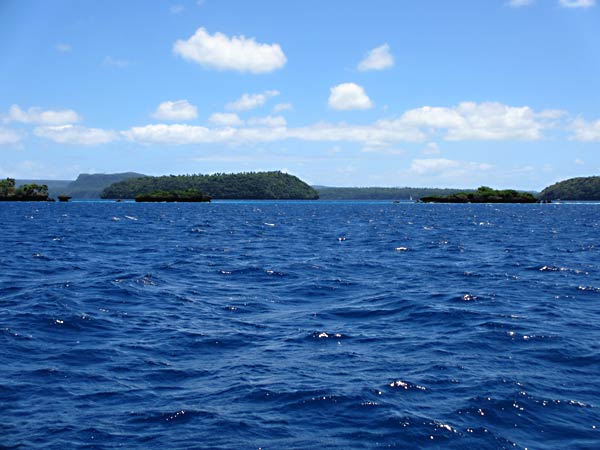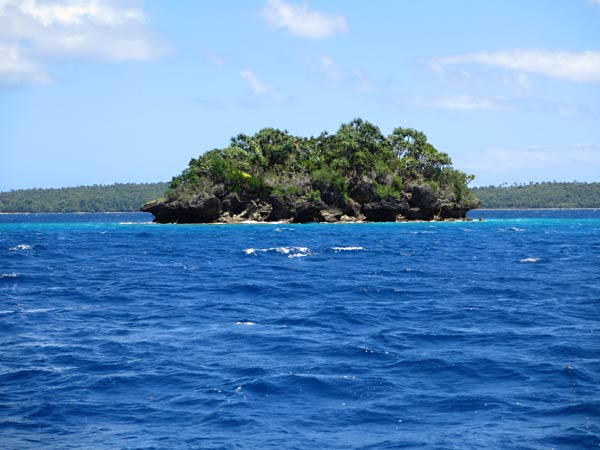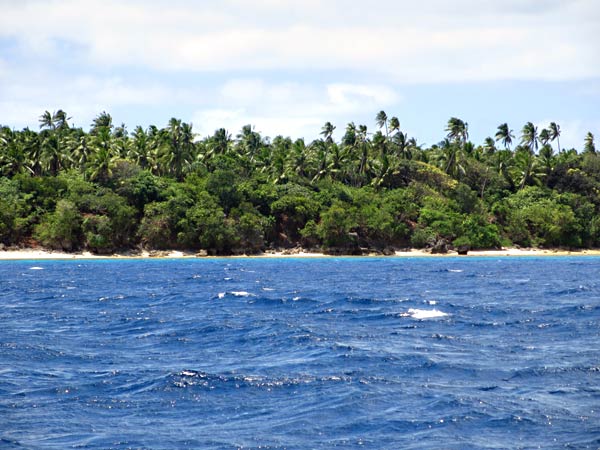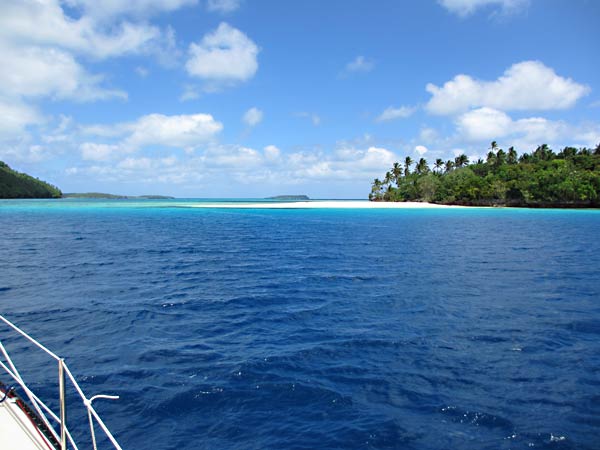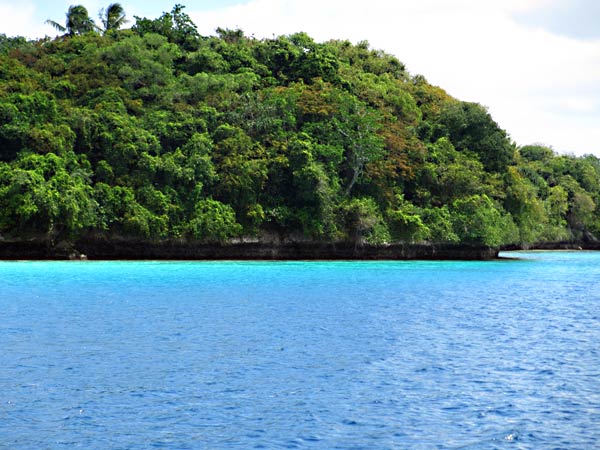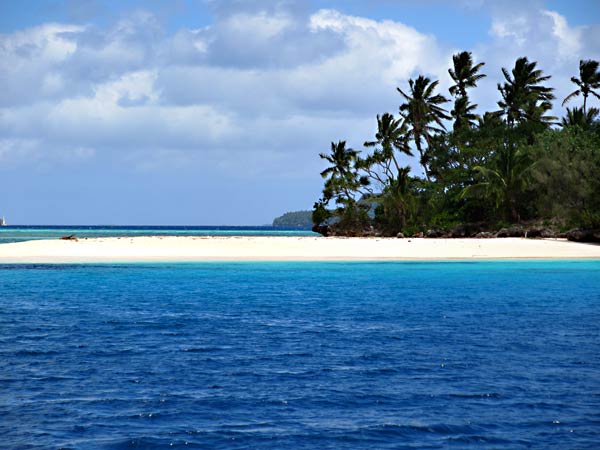October 13, 2012
Here in Vava’u there is a map/chart everyone uses when going to the nearby islands. On this map, each anchorage is numbered, and generally people refer to the anchorages by their numbers. Instead of saying, “We went to the southwest anchorage on Taunga Island,” they’ll say, “We went to 23.” In all, there are 42 anchorages.
We had watched people come and go and have a wonderful time; so we finally decided it was time for us to get out there, too. Unfortunately we made the rookie mistake of picking a convenient time to go rather than focusing more on the weather. But in our defense, the predicted 10 to 20 knot winds was a big range! We hoped for 10; we got 20.
When you’re in the harbor, it’s so protected that you can’t really know what the conditions are like outside until you’re out there, and it’s a 30 to 40-minute ride down the channel. I will mention again that the outer area has so many islands and reefs, it’s more like a bay than the open ocean in that you don’t have the big swells. But you do still have the chop, wind and spray; and 20-knot winds, while not really that uncomfortable, are not very pleasant. And wind makes maneuvering a boat around rocks, islands and reefs much more stressful.
We decided to stay with the planed destination #16, in that it should be fairly sheltered from the wind. The best way to describe the area where we were heading is to picture a large C about 2 miles long. This C is made up of 2 long very thin islands that are nearly joined together. Visible in the middle of the C is one larger island and scattered small rock islands. Not visible but dangerous are the reefs.
Anchorage 16 is in the lower part of the C, but to get there you need to enter the area at the upper part of the C and go around the islands in the middle. It’s not that a long distance, but it’s a slow process as you need to take care, check your position on the chart, and watch for hazards. We lost some confidence when we spotted a rock island that wasn’t on our chart (trying to figure out what’s where is confusing enough without the chart having mistakes!).
We made our way in but were dismayed by what we saw when we finally got down to #16. It had a fair number of boats in it, and they were all bunched up behind a hill looking to get protection from the wind-generated chop (and from the looks of the dinghies bobbing alongside the boats, it didn’t look like they were getting much protection). We could have found a spot out in the windier area, but then what? This weather was supposed to last a few more days, and we’d be stuck on our boat as it was too windy to use the dinghy. We decided to turn around.
At this point, we could have picked up a mooring at the center island but didn’t especially want to go there. There were moorings at #15 at the top of the C, but we didn’t feel comfortable with our chart in that area. As we motored out, we heard someone we knew on the radio telling another friend there was plenty of room where he was, a lovely spot. We called to find out where this was, and it was an island just south of us. We went to have a look, and he was anchored off this island in what looked like the middle of the ocean in the strong winds. His “lovely spot,” did not look at all lovely to us!
Our next anchorage to try was a beautiful place I had spotted on our whale tour, a sand spit between two islands (Nuku and Kapa). We went over and there was only one boat there, who happened to be a friend of ours. He told us how he anchored on a shallow sand shelf in the otherwise deep water. We went up to take a look and had no problem finding the shelf. But this situation points out a difference in mentality among cruisers. For us to anchor, we want to feel that we will be secure no matter what direction the wind turns. But to enjoy many of these anchorages, you have to believe that the prevailing winds blowing from the east/southeast will continue to do so.
And the fact is, they almost certainly will! But if for some reason they do suddenly shift (a strong squall or other weather surprise), you may find yourself on a reef or (in this case) grounded on a sand spit. It comes down to how comfortable you are with “almost certainly.” Most people are, but we are not. One thing we learned in our time here is that there are 42 anchorages if the conditions are near windless (which is not very frequent) or if you are comfortable that the prevailing wind will not shift. Otherwise, there are 2 anchorages, maybe 3.
We headed to our final option and last resort for the day, #7 (aka Port Maurelle). It is a secure anchorage just outside the channel to Neiafu and often used as a jumping-off point for going to the other islands or leaving Vava’u. It is easy to get to, often crowded, and is a bit looked down upon for being too easy and too busy: too “typical.” My guidebook had denounced it, wondering why people pile up there, succumbing to the sheep mentality, when there are so many nicer anchorages around! Because of that it wasn’t one of my top choices, but suddenly it was our only choice and I hoped it wouldn’t be too crowded. -Cyndi
